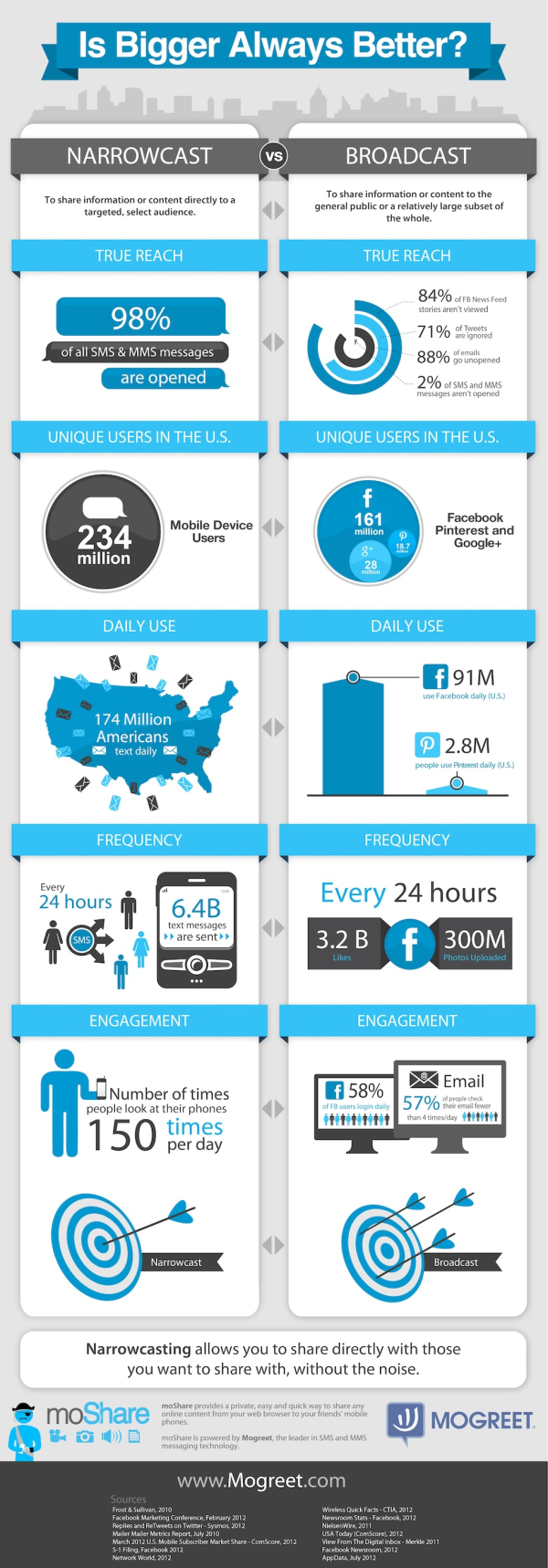Mobile Marketing is growing incredibly fast because mobile internet usage has skyrocketed in the last 2 years and mobile devices such as smartphones and tablet computers are penetrating our population as though they were a disease. While I am making a joke, it is worth noting that many of us are becoming addicted to our mobile devices. View the infographic below which shows that the average smartphone owner looks at their mobile 150 times a day. Would you call that compulsive?
In May 2012 52% of Australians own a smartphone and while only 15% of Australian households own a tablet computer (probably an iPad), that number is expected to grow to 39% by the end of 2012. If you weren’t at the Future of Digital Advertising seminar in Sydney earlier this year, we learnt that the uptake of tablet computers in Australia has been the fastest adoption of any technology ever in the history of the world. Pretty cool huh?
Anyway, the point of this post was to impress upon marketers and business owners that mobile marketing is going to become increasingly more important to the success of your digital marketing strategies due to the prolific use of mobile devices in Australia. And why aren’t marketers paying attention? It seems like a no brainer to me. You don’t need an infographic to tell you that 98% of mobile SMS messages are opened and viewed. And I thought it too – that doesn’t mean that any action is taken. But its still better than not being seen at all like email or social can be. Mobile is a direct response digital channel, like most digital media channels. It is low cost, highly engaging and if done properly, highly targeted. The term narrowcasting is very new and as you can imagine, is the direct opposite of broadcasting. Where email and social media are most often used as broadcast channels (even though narrowcasting is easily doable), SMS seems to have developed as a more narrow and targeted channel – often used as a one on one communication channel with specific offers to customers based on their personal subscriber services and behaviour. Of course mobile SMS marketing can also be abused and used as a broadcast channel but at present marketers seem to be using it as a customer service and upsell telemarketing channel. So I won’t complain (too much).
Mogreet.com have shared an infographic that shows the benefits of mobile marketing when compared to broadcast digital channels such as email marketing and social media marketing.
Everybody loves a clear and easy to understand Infographic right? The problem I have with this infographic, even though I have chosen to share it with you, is that the broadcast column floats around between too many digital media channels. I would prefer to have seen a direct comparison between mobile marketing as a narrow but targeted digital channel that delivers better value (marketing return on investment) and stronger results for the brand using it, and email – a well known broadcast channel that many marketers do not segment and target as well as the medium allows.
Instead, Mogreet compare mobile marketing, and specifically SMS deliverability and open rates to email, twitter messages, facebook posts and pinterest. While I understand that these are all forms of micro-messaging (short posts) and they are broadcast in a sense – these social media platforms supposedly auto target users based on their behaviour. If a Facebook post doesn’t show up in my newsfeed it could be because I don’t interact with the brand and therefore it has been deprioritised by Facebook. It could also mean that I have deliberately hid the post or that it was not relevant to me based on my past behaviour. Of course this highlights the point that just because Facebook tells us they can target – and we know they can in their advertising as I often see very relevant digital marketing content targeted at me with Facebooks paid advertorials – marketers can’t rely on 3rd party platforms and technology to target their potential customers for them. They must actively engage and plan their campaigns. And with statistics showing that the average smartphone owner looks at their mobile device 150 times a day compared to checking their email perhaps 4 times a day, perhaps its time to shift some focus onto mobile marketing?
Anyway, I think I have rambled long enough to make my point slightly blurry but this is it in a nutshell. Mobile marketing is definitely important and we need to start giving it a larger share of our marketing budget, or at the very least our digital marketing budget because …. the audience is only going to get bigger, their expectations are going to become more demanding and your competitors might get there before you!


Hi Shanelle, interesting article… although the graphic confused me too. Have you got good or bad experience with mobile marketing platforms, esp here for the Australian market? hope you are well. Bettina
Hi Bettina,
I’ve had a lot of experience with these Mobile Marketing Platforms for SMS when I was working in retail and the Not for Profit sector is starting to use it to reactivate lapsed supporters with SMS’s to confirm details or affirm an upgrade.
There are so many suppliers and most of them offer the same thing, so its just about finding someone that you like to work with.